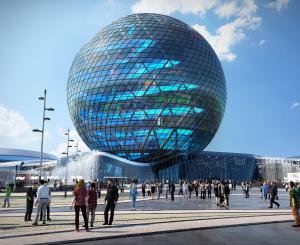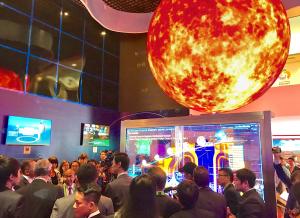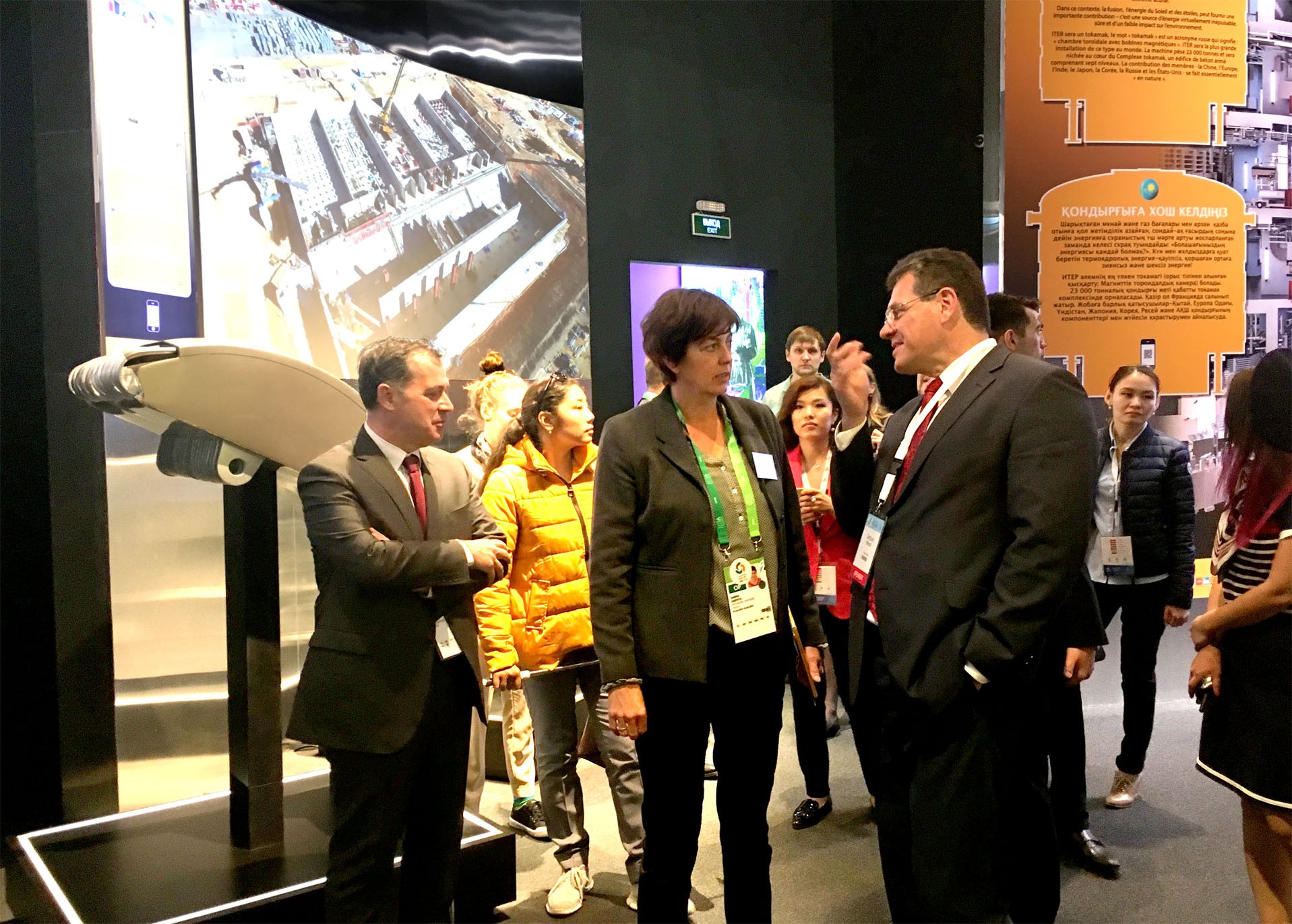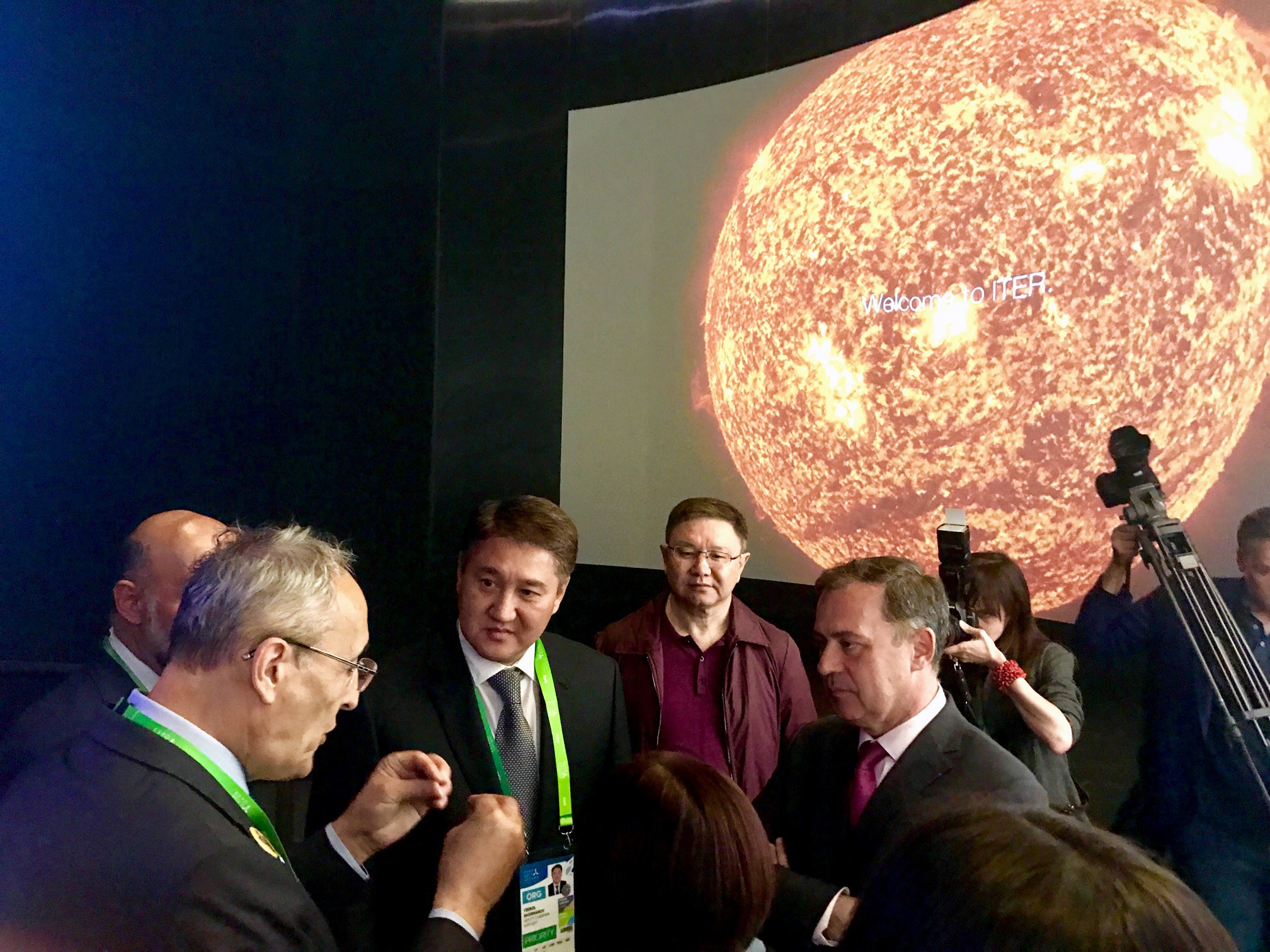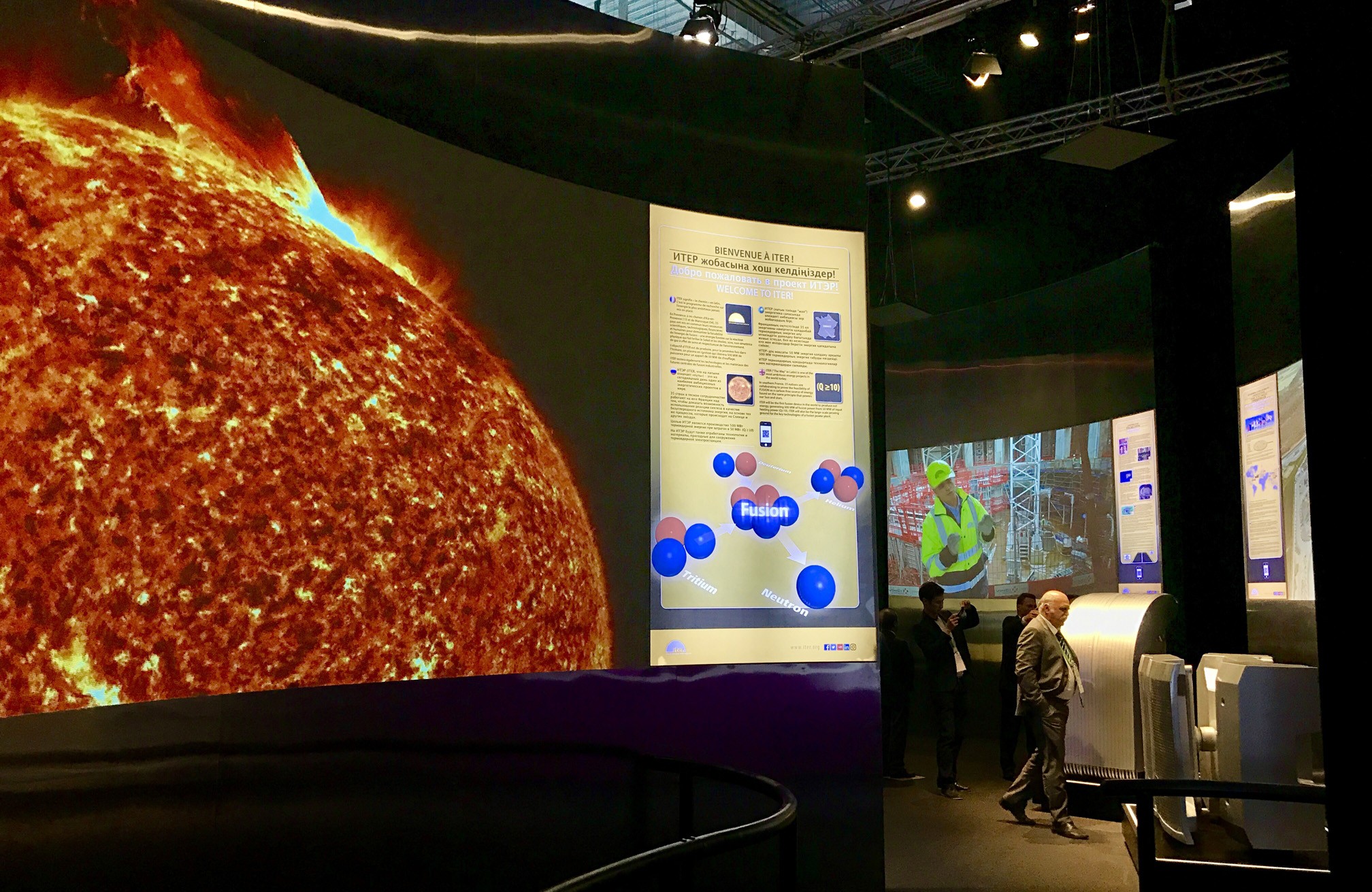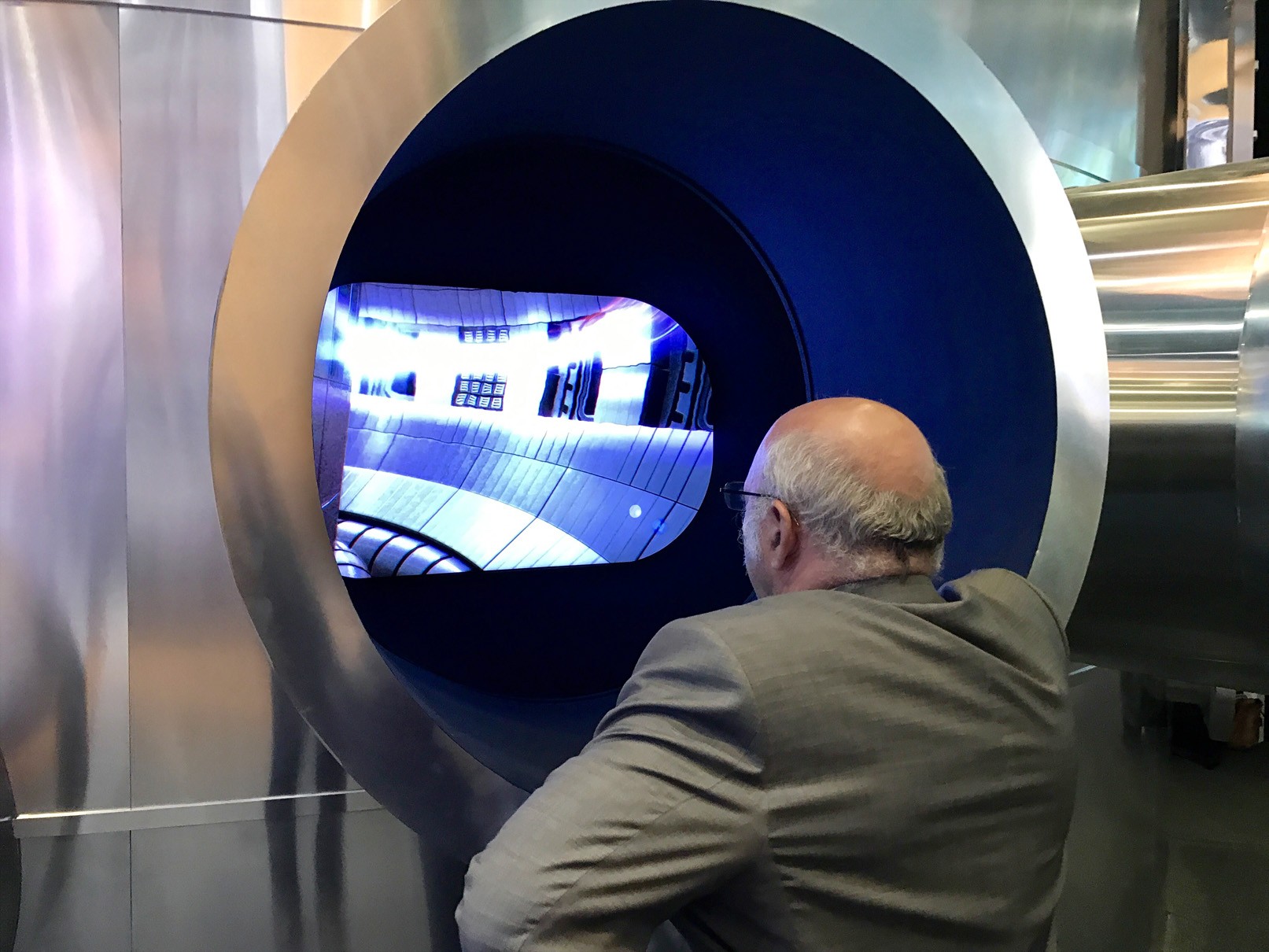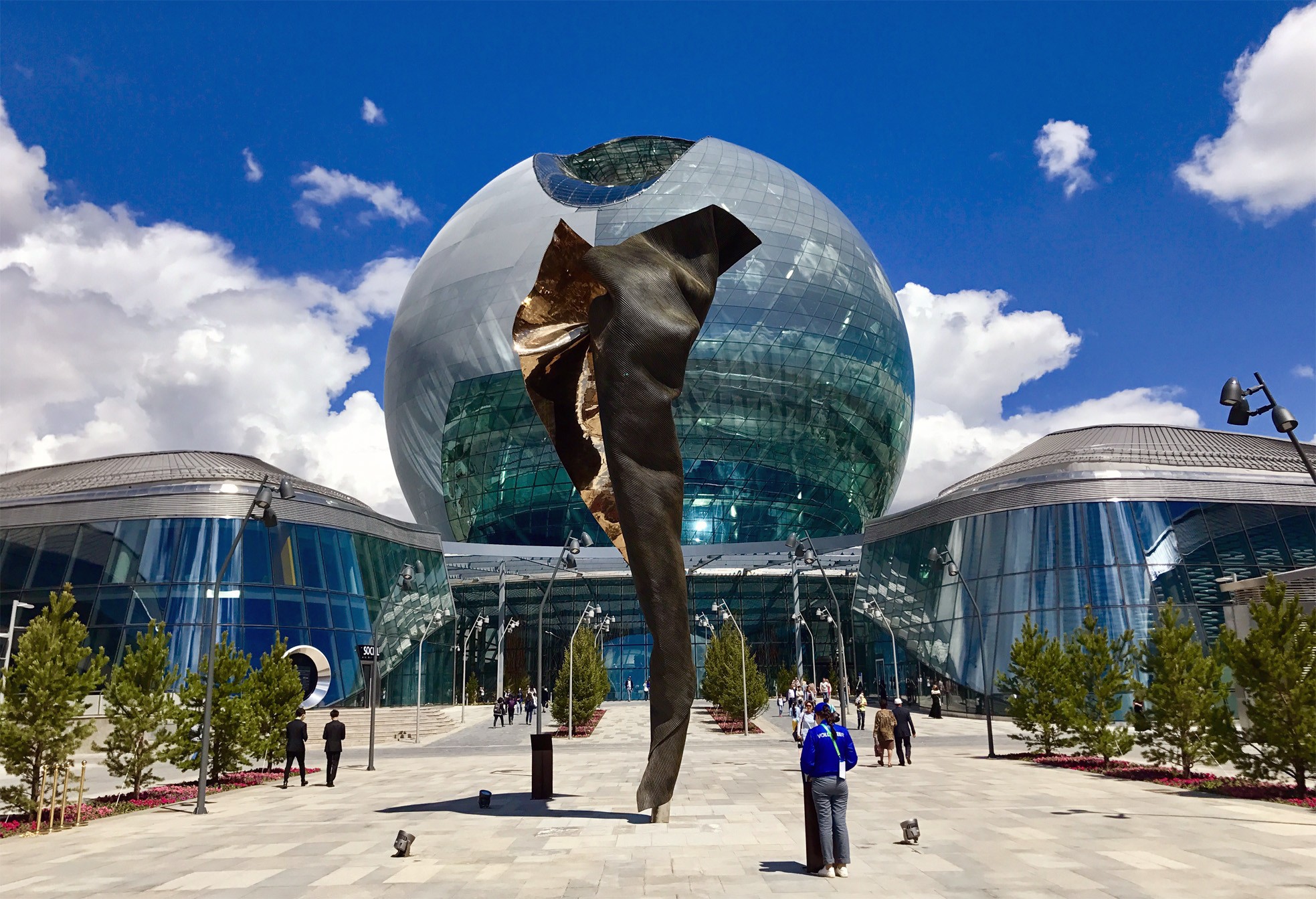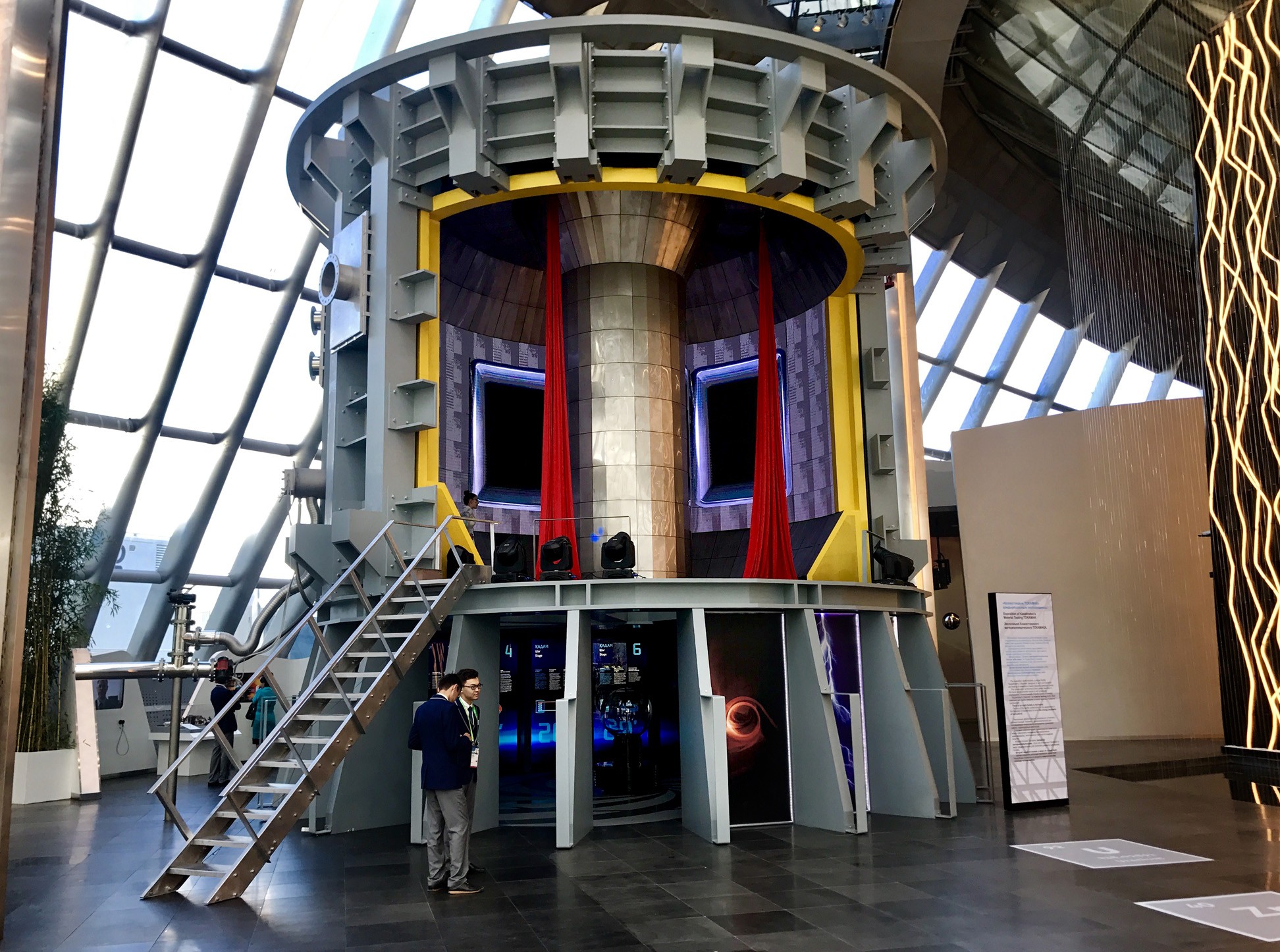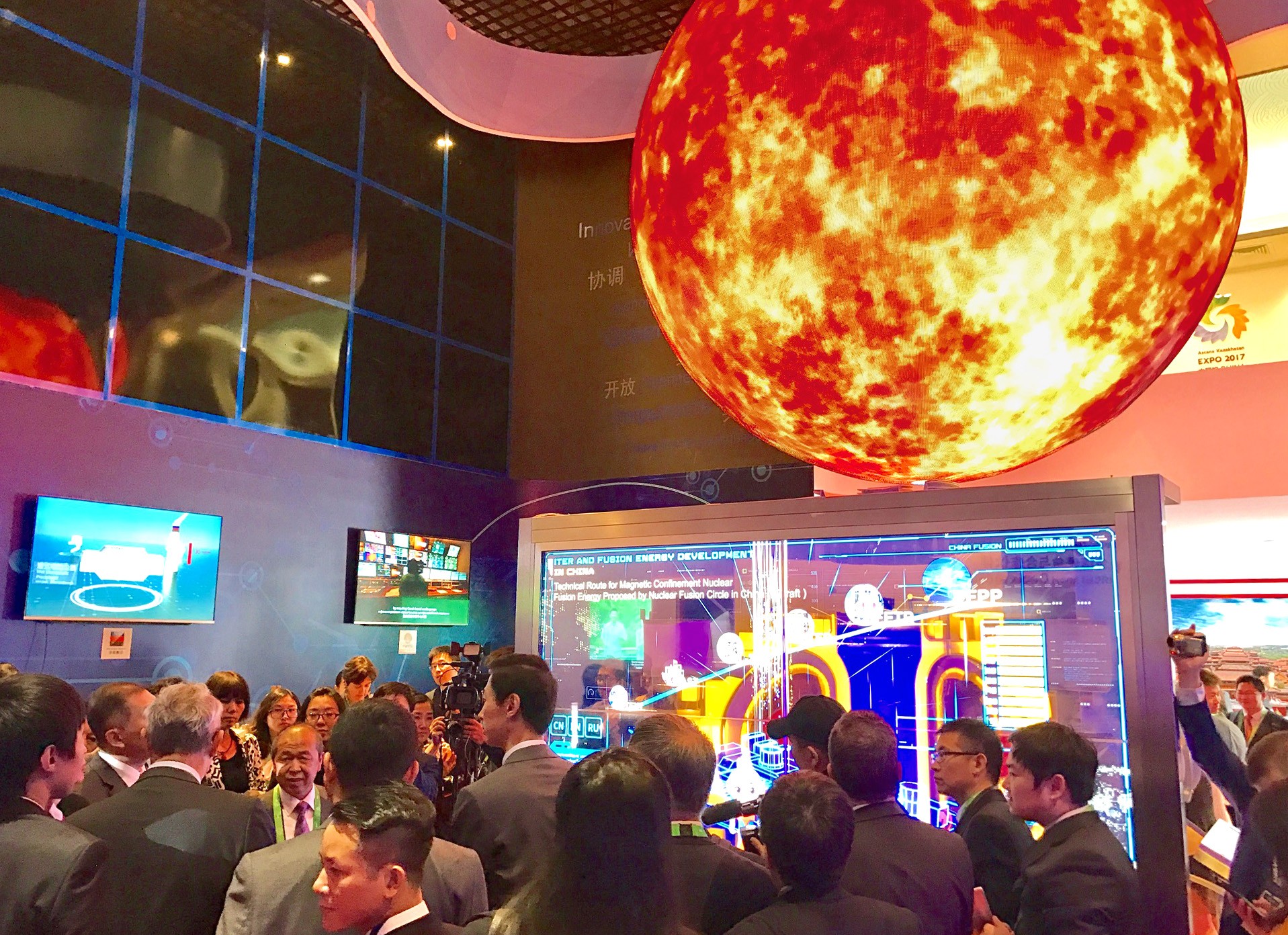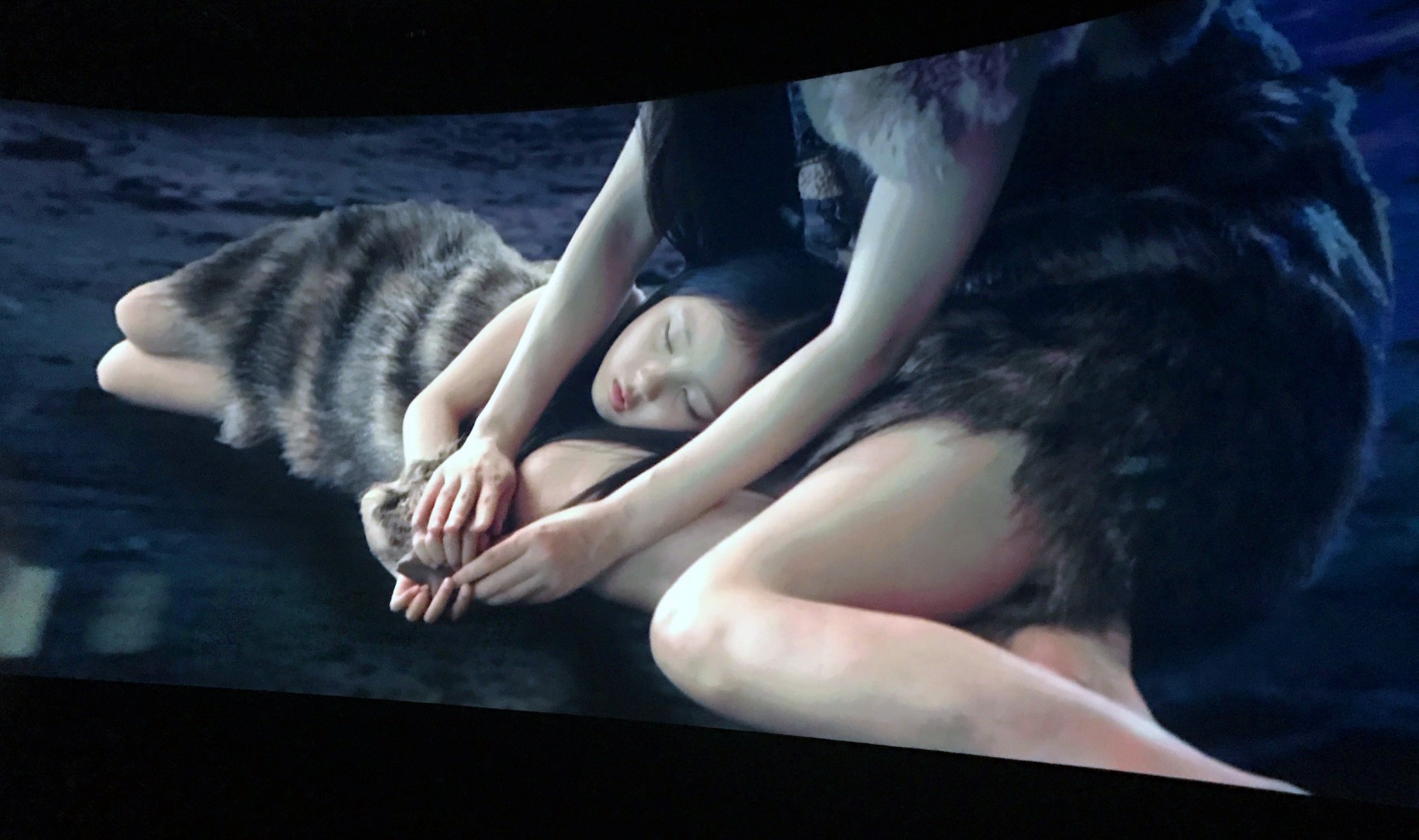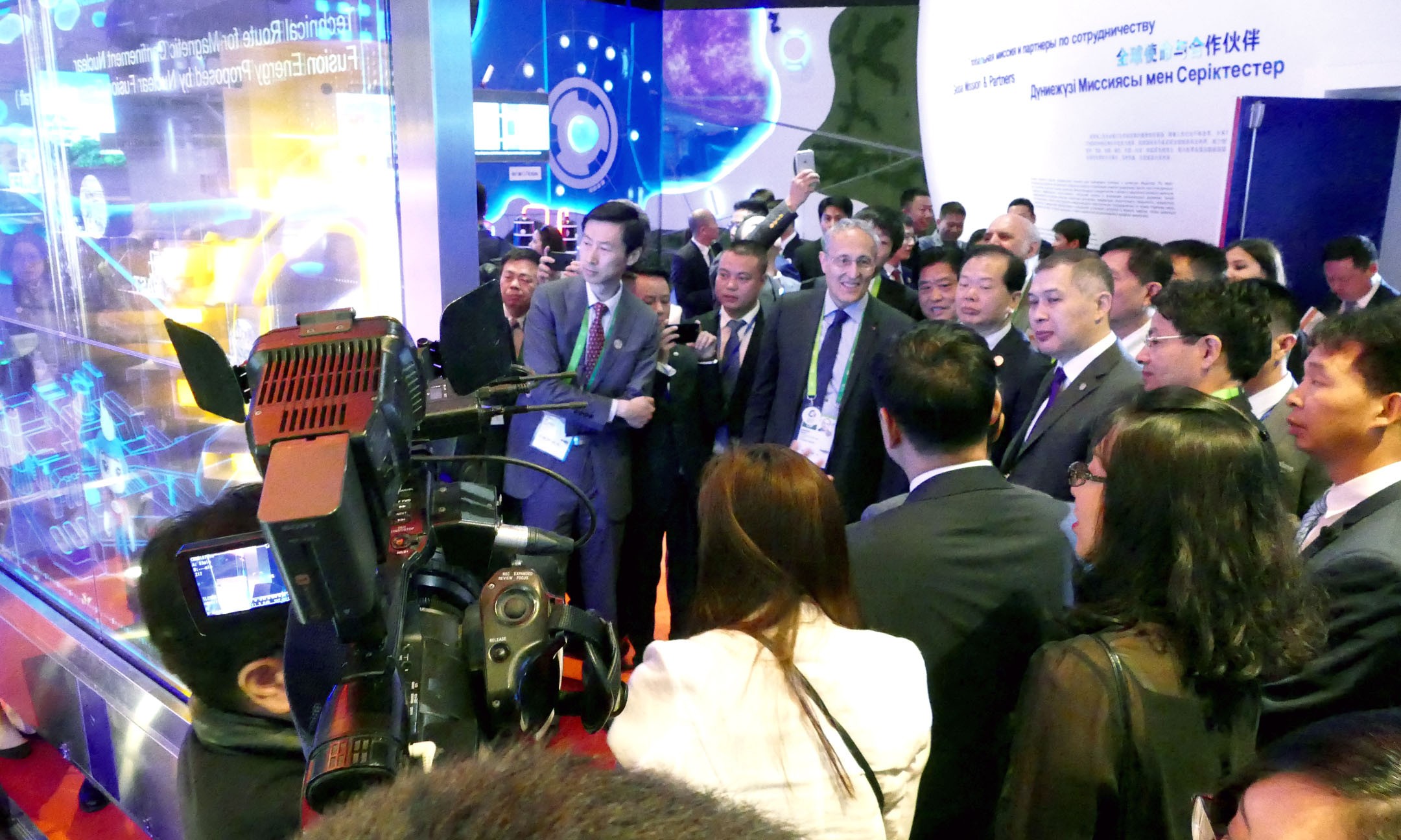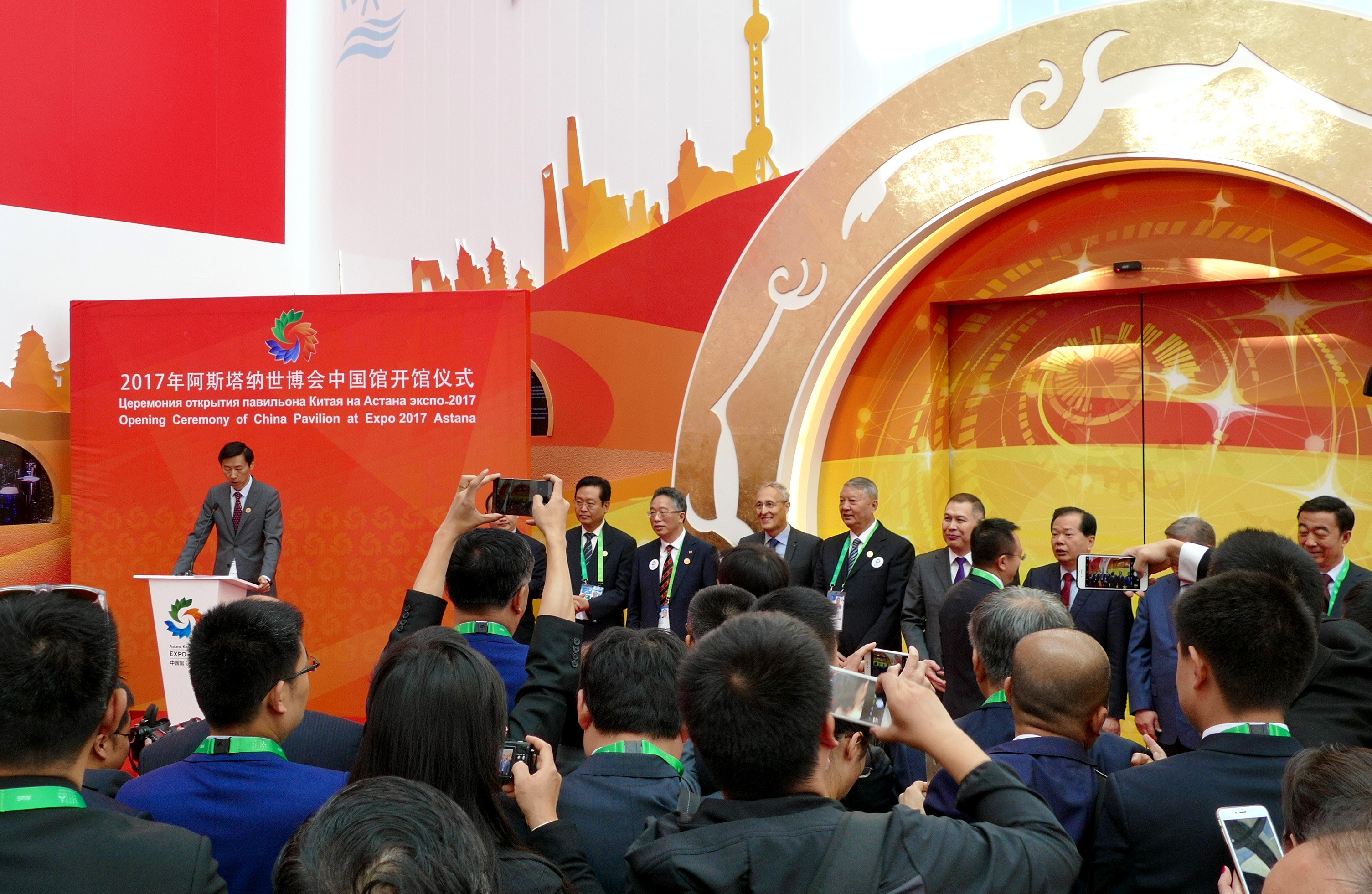It is only logical, then, that ITER and fusion were well represented at this exceptional technological showcase. "I cannot imagine any science and engineering project with a greater potential impact on the future than harnessing the power of the sun and the stars," ITER Director-General Bernard Bigot said, as he inaugurated the ITER exhibition.
When US architects Adrian Smith and Gordon Gill began to design the EXPO 2017 structures—which, seen from a distance, resemble a spaceport—the landscape was not much more than dry steppe. On 174 hectares they have created a visually remarkable exhibition area consisting of more than 200 buildings and nationally themed pavilions. The centerpiece is an 80-metre-in-diameter sphere showcasing the history and vision of the EXPO host country, Kazakhstan.
A few steps away from this central nucleus, the ITER Organization has designed a 110-square-metre exhibition within the French Pavilion. There, the benefits of fusion as a potential source of safe, clean and virtually unlimited energy—and the ITER Project under construction now, underwritten by 35 nations—are explained through a series of multimedia tools, models, displays and virtual reality. As Host to the project, France had invited ITER to participate in EXPO 2017 alongside technologically innovative companies such as Peugeot, Total and Veolia.

